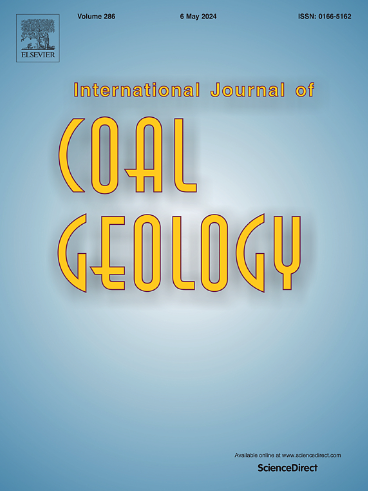保加利亚西南部早渐新世Pirin煤层沉积时期泥炭形成环境的岩石学和有机地球化学研究
IF 5.7
2区 工程技术
Q2 ENERGY & FUELS
引用次数: 0
摘要
在保加利亚西南部的Pirin矿床中,厚达30米的Brezhani煤层是保加利亚境内唯一的早渐新世煤,为了解该时期的泥炭形成环境提供了重要的见解。利用有机岩相学、有机地球化学和生物标志物分析对煤层进行了研究。本文章由计算机程序翻译,如有差异,请以英文原文为准。
Petrological and organic geochemical insights into the peat-forming environmental settings during the deposition of the early Oligocene Pirin coal deposit, SW Bulgaria
The up to 30-m-thick Brezhani coal seam in the Pirin deposit (SW Bulgaria) is the only coal of early Oligocene age on the territory of Bulgaria, providing important insights into peat-forming environments during that period. The coal seam was investigated using organic petrography, bulk organic geochemistry and biomarker analysis.
Coal is predominantly composed of detrovitrinite with subordinate collotelinite and abundant corpogelinite. Liptinite macerals are mostly represented by alginite and suberinite, and locally resinite. The coal commonly contains semi-inertinized (oxidized) root tissues without apparent thermal influence. The low- to moderate tissue preservation indicates predominant contribution from plants with low preservation potential. Rare resin-impregnated woody tissues argue for peat accumulation within a sparsely forested shrub-dominated mire. Biomarker proxies indicate a contribution from mixed vegetational communities, composed of flowering plants and bald cypresses. A contribution of aquatic macrophytes is also evident.
Variable ash yields and sulfur contents indicate changeable water supply and pH conditions. However, high sulfur contents and ash yields in a large number of the samples denote organic matter accumulation within a topogenous mesotrophic marginal limno-telmatic mire. Plant material accumulated at or very close to the water surface in a predominantly water-logged environment, indicated by strong gelification. The initial oxidizing conditions were quickly shifted to reductive settings due to flooding of the peat surface with possible seasonal dynamics.
Low maturity of the organic matter and limited hydrocarbon generation potential are evident from the low vitrinite reflectance (avg. Ro = 0.52 %), biomarker parameters and Rock-Eval data.
求助全文
通过发布文献求助,成功后即可免费获取论文全文。
去求助
来源期刊

International Journal of Coal Geology
工程技术-地球科学综合
CiteScore
11.00
自引率
14.30%
发文量
145
审稿时长
38 days
期刊介绍:
The International Journal of Coal Geology deals with fundamental and applied aspects of the geology and petrology of coal, oil/gas source rocks and shale gas resources. The journal aims to advance the exploration, exploitation and utilization of these resources, and to stimulate environmental awareness as well as advancement of engineering for effective resource management.
 求助内容:
求助内容: 应助结果提醒方式:
应助结果提醒方式:


